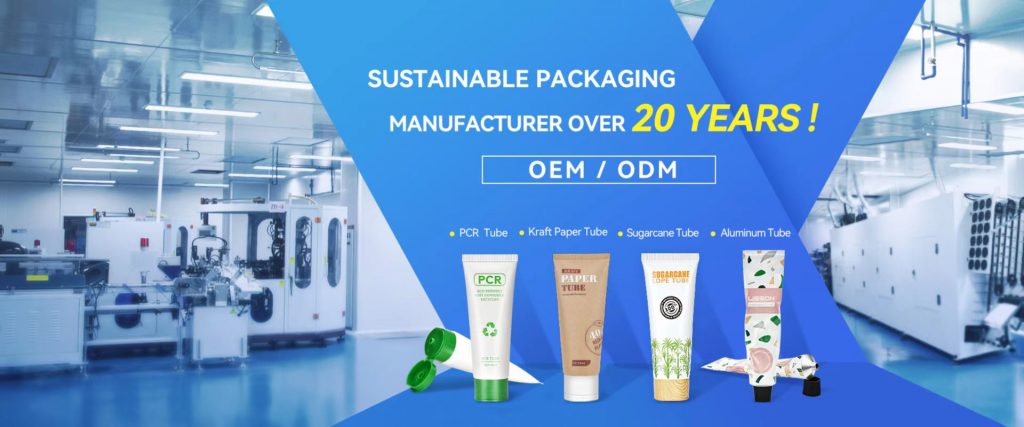Sugarcane, a renewable resource thriving in warm, tropical climates, is making a significant impact in the cosmetic packaging industry. Unlike traditional plastics derived from petroleum, sugarcane-based products like cosmetic tubes offer an eco-friendly alternative without compromising on quality and durability.
Understanding Sugarcane-Based Cosmetic Tubes
Sugarcane plants contain sucrose, a natural polymer. When processed, this sucrose forms polylactic acid (PLA), mirroring the molecular structure of traditional plastic. The key difference lies in the source material – sugarcane is a plant-based, renewable resource.
Dr. Jane Smith, a leading expert in sustainable materials, notes, “The use of sugarcane in cosmetic packaging is a game-changer. It not only reduces our reliance on fossil fuels but also offers a biodegradable solution that traditional plastics can’t match.”
Sugarcane cosmetic tubes boast the same strength and durability as their traditional plastic counterparts. The standout features? They are 100% biodegradable. These tubes can decompose in a home compost pile or a municipal compost facility, seamlessly integrating with other recyclables.
Why Choose Sugarcane for Cosmetic Packaging?
Sugarcane cosmetic tubes are gaining popularity among brands for their renewable and biodegradable nature. These tubes are processed into pellets, melted down, and extruded into various shapes and sizes, serving as bottles, jars, tubes, and caps for cosmetic products.
According to a study published in the Journal of Cleaner Production, “Switching to sugarcane-based packaging can reduce greenhouse gas emissions by up to 70% compared to conventional plastic packaging.”
The shift from petroleum-based plastics to sugarcane-based products promises a healthier environment. Sugarcane tubes are a testament to the potential of using plant-based materials for sustainable packaging solutions.
Common Questions About Sugarcane Cosmetic Tubes
Despite their growing popularity, sugarcane cosmetic tubes are still a novel concept for many. Here are some common questions addressed:
Is it biodegradable? Can you bury it? Can I put it in my food recycle bin? Is it compostable?
Sugarcane plastic is compostable rather than biodegradable. It won’t decompose instantly like organic waste but can be composted. The ideal disposal method for these tubes is through regular trash or compost bins. The eco-friendly squeeze tube may not compost quickly enough for food waste recycling bins.
To clarify:
- Biodegradable: Yes, as it’s made from sugarcane waste, it will biodegrade under the right conditions.
- Burial: Yes, being a natural material, it will eventually decompose.
- Food recycle bin: Yes, it’s suitable for food recycling bins.
- Compostable: Yes, similar to organic waste like fruit peels.
Sugarcane cosmetic tubes derive from sugarcane bagasse, a byproduct of sugar refining. Bagasse is the fibrous pulp remaining after extracting juice from sugarcane stalks. Previously discarded, it’s now utilized for various purposes, including biofuel production and paper making. Its natural composition ensures it is biodegradable without artificial substances.
Dr. Emily Johnson, an environmental scientist, explains, “Utilizing sugarcane bagasse for packaging not only reduces waste but also provides a sustainable alternative to traditional plastics, aligning with global efforts to minimize environmental impact.”
Post-Disposal Impact of Sugarcane Cosmetic Tubes
Once disposed of, sugarcane cosmetic packaging decomposes like paper. In landfills, microorganisms digest the fibers, producing less carbon dioxide compared to materials like plastic and aluminum. This eco-friendly packaging has a low carbon footprint and is produced through an energy-efficient process requiring less water than other materials.
A study by the Environmental Science & Technology journal found that “sugarcane-based bioplastics can significantly lower the carbon footprint of packaging materials, contributing to a more sustainable production cycle.”
Limitations of Sugarcane in Cosmetic Tubes
Currently, 100% sugarcane-based cosmetic tubes are not feasible due to the natural variability of sugarcane as a crop. To ensure consistency and stability, sugarcane is mixed with other plastic materials, resulting in recyclable, eco-friendly tubes.
Dr. Michael Green, a materials engineer, states, “While pure sugarcane-based packaging is an ideal goal, blending it with other materials ensures the necessary durability and functionality for commercial use.”
Can I Eat Sugarcane Cosmetic Packaging?
- Edibility: Sugarcane cosmetic packaging, made from bagasse, is not edible. Bagasse is the leftover plant material after juice extraction, distinct from sugarcane juice. It’s unsuitable for consumption.
Sugarcane cosmetic tubes are safe for children, containing all-natural ingredients without added preservatives. Additionally, sugarcane’s natural antimicrobial properties make it ideal for preserving product freshness.
- Brand Benefits: For environmentally conscious consumers, sugarcane cosmetic tubes offer a sustainable choice. Brands can leverage this innovative material to enhance their market presence, enjoy cost benefits, and provide better customer experiences.
Conclusion
Sugarcane cosmetic tubes represent a significant step towards sustainable packaging in the beauty industry. They offer an environmentally friendly alternative to traditional plastics, aligning with the growing demand for eco-conscious products. As the industry evolves, sugarcane-based packaging could play a pivotal role in reducing environmental impact and promoting sustainability.
